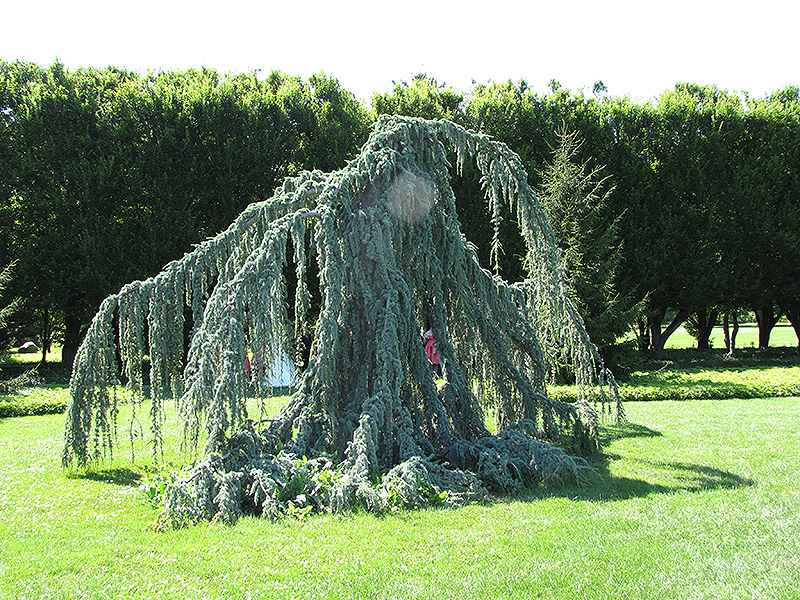>> Home
Weeping Blue Atlas Cedar
Cedrus atlantica 'Glauca Pendula'
Height: 15 feet
Spread: 30 feet
Sunlight:
![]()
Hardiness Zone: 6a
Description:
A true accent piece, featuring a sprawling, horizontal habit of growth, certainly not for every landscape but very effective in the hands of a good designer; silvery-blue needles provide intense color all year round
Ornamental Features
Weeping Blue Atlas Cedar is a dwarf conifer which is primarily valued in the landscape for its highly ornamental weeping form. It has attractive blue evergreen foliage. The needles are highly ornamental and remain blue throughout the winter.
Landscape Attributes
Weeping Blue Atlas Cedar is an open multi-stemmed evergreen shrub with a rounded form and gracefully weeping branches. Its relatively fine texture sets it apart from other landscape plants with less refined foliage.
This shrub will require occasional maintenance and upkeep, and usually looks its best without pruning, although it will tolerate pruning. It has no significant negative characteristics.
Weeping Blue Atlas Cedar is recommended for the following landscape applications;
- Accent
- General Garden Use
Planting & Growing
Weeping Blue Atlas Cedar will grow to be about 15 feet tall at maturity, with a spread of 30 feet. It has a low canopy with a typical clearance of 1 foot from the ground, and is suitable for planting under power lines. It grows at a slow rate, and under ideal conditions can be expected to live to a ripe old age of 100 years or more; think of this as a heritage shrub for future generations!
This shrub should only be grown in full sunlight. It is very adaptable to both dry and moist growing conditions, but will not tolerate any standing water. It is not particular as to soil type or pH. It is somewhat tolerant of urban pollution, and will benefit from being planted in a relatively sheltered location. Consider applying a thick mulch around the root zone in winter to protect it in exposed locations or colder microclimates. This is a selected variety of a species not originally from North America.

